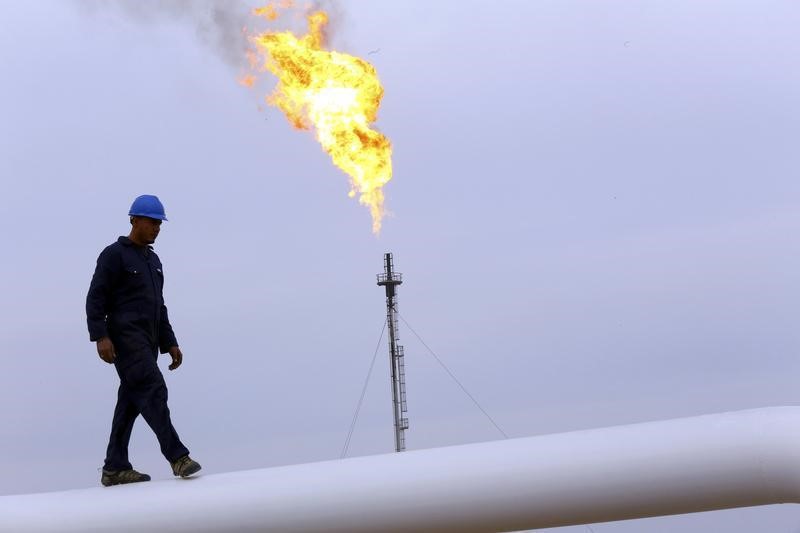Commodities
Oil: 3rd losing week; One of market’s loudest bulls admits buyers have vanished


© Reuters.
Investing.com – It’s not everyday that you get to read a Phil Flynn note that’s virtually bearish on oil. But to hear one of the market’s loudest oil bulls admit that people have been fleeing the long crude game like rats abandoning a sinking ship should be a wake-up call to those who kept drumming for a return to $100 pricing in recent weeks.
“The petroleum buyers are gone, unless you are talking oil call options, as supply and demand take a back seat to rising macroeconomic fears,” Flynn wrote as crude futures headed for a third straight week of losses despite rising over the past two sessions after Thursday’s four-month lows.
“Maybe the buyers of oil have been taken away from the mother ship or maybe they have just ridden off into the sunset, but the reality is we are seeing a short oil position of epic proportions as the market seems to remove the risk of ever rising again.”
New York-traded , or WTI, crude for December delivery, settled at $77.17 per barrel, up $1.43, or 1.9% on the day, adding to Wednesday’s 0.5% rise. For the week though, WTI was down 4.1%, after prior back-to-back weekly losses 6% and 3%. That came after the US crude benchmark 11% tumble for October.
As WTI settled, UK-origin crude’s most-active January contract was at $81.66, up $1.65, or 2.1% after Thursday’s 0.6% gain. For the week, Brent was down 3.8%, after back-to-back weekly losses of 6% and 2%. Prior to that, the global crude benchmark lost 11% in October.
With the US Treasury yield rebounding over the past two sessions, the Fed may have to offer much higher rates to get investors interested in US bonds — adding to market unease that the central bank’s rate hikes may not be over, said Flynn.
“Underneath it all, the crash in the price of oil is either a very ominous sign for the state of the global economy or a sign that it is being driven by fear and not on supply and demand fundamentals,” he added. “The oil market swing in mood has gone from pricing in the biggest threat to global oil supply since the Arab oil embargo 50 years ago to almost a record short position in the history of the oil futures markets.”
Pierre Andurand, one of the most closely-followed hedge fund managers in oil, also pointed out that, “net long speculative positioning in oil (crude products, options delta futures) is fast approaching the lowest since this data exists (2011). The managed money category in the COT (representing hedge funds) sold about 400 barrels in the last 6 weeks.
Most worthy was Andurand’s question on “what drives this selling?”, said Lynn.
The hedge fund said it was “hard to identify a clear reason”, adding: “There have been macroeconomic worries for a while now. However, demand growth has consistently been revised up during the year, and mobility data shows an acceleration in demand and demand growth. Some point to softness in the physical market.”
And while producer alliance OPEC+ is having an all-important meeting on Nov. 26 that could again introduce a tighter oil supply mentality, for now its exports are rising. Latest data from the cartel shows an expected seasonal rise of 180,000 barrels in shipments, led by Iraq and Iran.
(Peter Nurse and Ambar Warrick contributed to this article)
Commodities
Oil prices rise; U.S. crude inventories plunge, Russia-Ukraine truce eyed
Commodities
India’s Reliance to stop buying Venezuelan oil over US tariffs, sources say
Commodities
Oil prices climb on Venezuela supply worries

 Forex3 years ago
Forex3 years agoForex Today: the dollar is gaining strength amid gloomy sentiment at the start of the Fed’s week

 Forex3 years ago
Forex3 years agoUnbiased review of Pocket Option broker

 Forex3 years ago
Forex3 years agoDollar to pound sterling exchange rate today: Pound plummeted to its lowest since 1985

 Forex3 years ago
Forex3 years agoHow is the Australian dollar doing today?

 Cryptocurrency3 years ago
Cryptocurrency3 years agoWhat happened in the crypto market – current events today

 World3 years ago
World3 years agoWhy are modern video games an art form?

 Commodities3 years ago
Commodities3 years agoCopper continues to fall in price on expectations of lower demand in China

 Economy3 years ago
Economy3 years agoCrude oil tankers double in price due to EU anti-Russian sanctions































